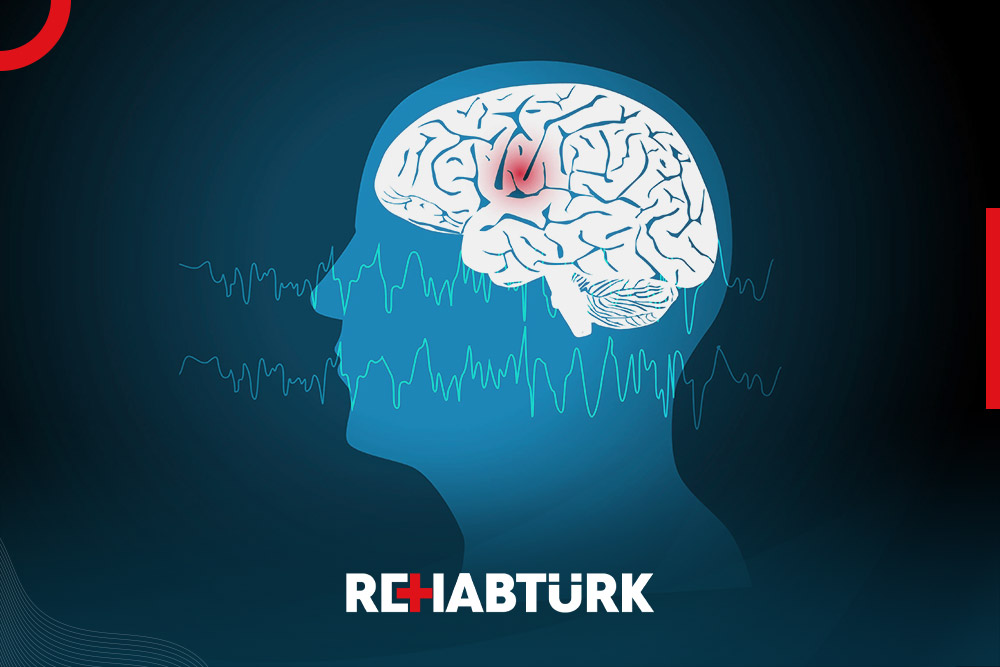Migraine treatment in Türkiye (migraine)
Treatment of migraines in Türkiye is done through surgical procedures or by injecting botulinum toxin, and these procedures have high success rates in most cases.
What is migraine surgery?
The goal of migraine surgery is to reduce the frequency, duration, and intensity of migraines. Migraines can be accompanied by pressure and irritation of the sensory nerves and blood vessels around the head. When these pressure points are released during surgery, the severity of migraines is reduced or eliminated altogether.

The nerve compression sites are also known as trigger points. You may have one or more of these trigger points based on your symptoms. The most common and important trigger point locations include the forehead (pain above your eyes and/or forehead), temporal (pain on the side of the head), nasal (pain inside your nose that may extend behind your eyes), and occipital (pain at the back of the head towards your eyes or behind your eyes). You may also experience pain in less common sites around your head.
Treatment options for migraines
Migraine surgery by nerve release:
The surrounding tissues—muscles, fats, or other structures—can impinge or compress the nerve, causing migraine pain. Since multiple different nerves can be a trigger, there are several different types of corrective surgical procedures. The appropriate surgery for you will depend on factors such as the location of the personal trigger points and the pain.
Treating migraines by blocking the pain
Nerve stimulation: Electrical stimulation involves surgically placing electrodes beneath the skin, surrounding the trigger nerve. They are connected by wires to a battery, also placed beneath the skin. The nerve electrodes are gently stimulated, keeping them occupied and preventing more severe pain signals from reaching the brain.
Nerve blockade: Local anesthetic and steroid injections are administered directly into the nerve. The anesthetic blocks pain signals for a period of time, and the steroid works to “calm down” the irritated nerve, sometimes eliminating the need for further treatment.
Occipital nerve blockade: Migraine headache treatment involves including nerve stimulators at the base of the skull, blocking pain messages to the brain.
Migraine treatment with botulinum toxin
Injecting botulinum toxin may help reduce muscular tension on some nerves, thus decreasing the severity, duration, and frequency of migraine attacks.
Pain relief from migraines often occurs within a few days of the treatment. Additionally, the results of a single botulinum toxin treatment can last for three months or more.
Which migraine treatment method is best for my case?
Our surgeons will need as much information as possible about all your medical conditions to select the best treatment for you. Therefore, we will need:
- Medical records from other doctors who have treated your migraines. If you cannot obtain copies of your records, you can provide a summary of the care you have received, including dates, procedures, tests, and medications.
- Any MRI, MRA, or CT scans and radiology reports.
- Our migraine questionnaire, which covers your symptoms, family history, triggers, and any other information you feel would be helpful.
- Any other relevant medical records from your neurologist or primary care physician.
Is botulinum toxin or surgery the best treatment for migraines?
Often, botulinum toxin is used to treat chronic migraine symptoms. If botulinum toxin injections fail to achieve desired results, the individual may be a candidate for migraine surgery.
In some cases, individuals with chronic migraines who receive botulinum toxin injections are also candidates for surgery. Migraine surgery can provide long-term relief from migraine pain.
What is the success rate of migraine surgery?
Most studies have shown success rates of over 90%, with nearly one-third of patients experiencing migraine relief. When successful, patients report improvement in the frequency, duration, and intensity of migraines, as well as improved health-related quality of life.
Who is a candidate for migraine surgery?
- Patients diagnosed with migraines by a neurologist (not all headaches are migraines).
- Those identified as having high-confidence trigger points.
Several other factors are considered, including the effectiveness (or failure) of medical treatment, the side effects of medications, and the severity of migraines. Patients who have a favorable response to botulinum toxin or local anesthetic injections are generally good candidates for migraine surgery.
Will I experience side effects or scarring?
Most complications are minor and temporary, varying depending on the specific surgery. Migraine treatment around the eye can improve the appearance of the forehead by reducing wrinkles and correcting sagging. Complications may include wound healing problems, nerve injuries, bleeding, and surgery failure to relieve migraines.
Most incisions are well-hidden, either in the scalp or in the upper eyelid.
Side effects and recovery from migraine surgery
Minor bruising and swelling may occur but typically subside within two weeks. Most patients are able to return to their normal activities within the same timeframe. Depending on the specific nerves targeted by surgery, patients may be asked to avoid strenuous exercises for up to three weeks.
Treatment of migraines in Türkiye
Surgeons in Türkiye have achieved great success in performing migraine surgery. It is not a complex procedure and does not require an opening in the skull. Plastic surgeons, neurosurgeons, and general surgeons specialize in performing this procedure.
For inquiries about migraine surgery in Türkiye, please contact our doctors now.

